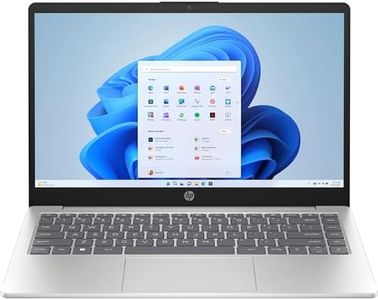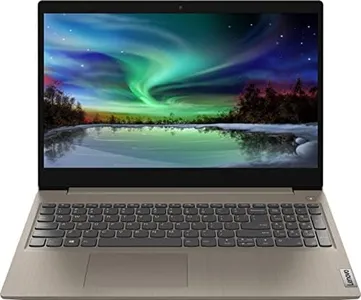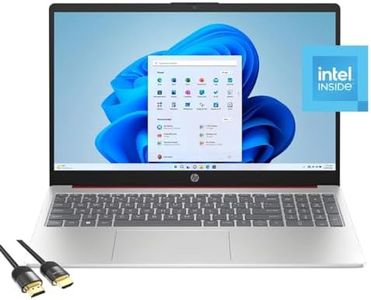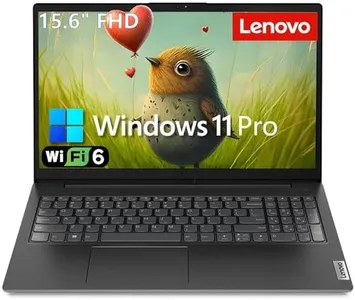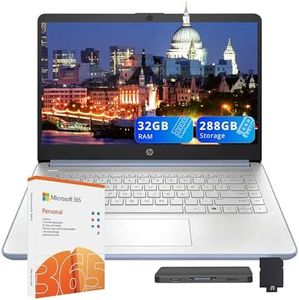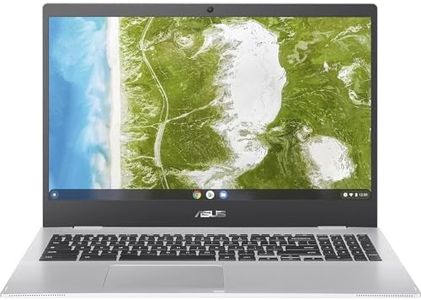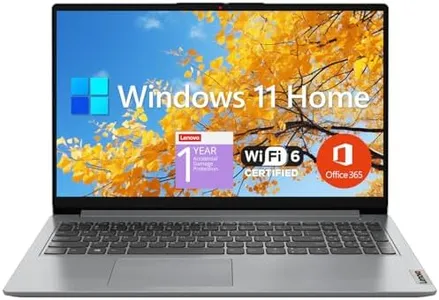We Use CookiesWe use cookies to enhance the security, performance,
functionality and for analytical and promotional activities. By continuing to browse this site you
are agreeing to our privacy policy
10 Best Laptops For Students
From leading brands and best sellers available on the web.Buying Guide for the Best Laptops For Students
Choosing a laptop as a student can be overwhelming with so many models and features available. The key is to think about what you'll use your laptop for—like taking notes, writing essays, browsing the web, streaming videos, or running specialized software for your courses. Think about portability, battery life, performance, and what software your school recommends or requires. Aim for a balance between what you need now and a bit of future-proofing so your laptop won’t feel outdated before you graduate.Processor (CPU)The processor, or CPU, acts as the brain of your laptop, handling most of the calculations and tasks. A faster or more powerful processor means your laptop will be more responsive, especially when running multiple applications or more demanding software. Entry-level processors are great for web browsing and light productivity, while mid-range CPUs offer a good balance for most students who might need to multitask or use some heavier applications. High-performance processors are mainly important for students in fields like engineering, video editing, or programming. Pick a processor level based on what kind of software you’ll need to use regularly.
Memory (RAM)RAM, or memory, helps your laptop handle more tasks at once and keeps things running smoothly. More RAM is best if you often have many browser tabs open or run memory-intensive programs, like graphics or video editing software. For basic use, 8GB of RAM is usually sufficient, while 16GB is better for heavier multitasking and professional-level tasks. Consider your usual workload to decide what you need—if you only do basic work or streaming, less is fine, but creative or technical work will benefit from more.
Storage (SSD or HDD)Storage determines how much space you have for your files, programs, and projects. Modern laptops often use SSDs, which are faster and make your system feel more responsive compared to traditional hard drives. For most students, 256GB is enough for documents, school projects, and some media. If you store lots of videos, photos, or large programs, you may want 512GB or more. Always aim for an SSD if possible, and consider external storage if you need lots of space.
Screen Size and ResolutionScreen size affects portability and how comfortable the laptop is to use for long periods. Smaller screens (around 13 inches) are good for portability, while larger screens (15 inches or more) are better if you need more workspace or do a lot of reading or design work. Resolution describes how sharp the screen looks; higher resolution makes text and images clearer, which is easier on your eyes during long study sessions. Pick based on your mobility needs and how much screen real estate you need for your tasks.
Battery LifeBattery life tells you how long your laptop can run on a single charge. This is crucial if you need to work on campus, in libraries, or anywhere without easy access to outlets. Laptops with longer battery lives (8 hours or more) are best for students moving between classes all day. Think about your daily routine—if you’re always near a power plug, it might not be as important, but for those often on the go, prioritize a longer battery life.
Weight and PortabilityThe laptop’s weight and overall size determine how easy it is to carry around. Lighter and slimmer laptops are ideal for slipping into a backpack and carrying all day between classes. If you’ll usually use your laptop in one place, weight might not be as important, but for most students, portability makes day-to-day use much less tiring.
Build Quality and DurabilityBuild quality means how sturdy and well-made the laptop is. Students often take their laptops between classes, labs, and libraries, so look for one that can handle being moved around and occasional bumps. Features like a strong hinge, spill-resistant keyboard, and solid casing are helpful. If your environment is rougher, prioritize models known for better durability.
Ports and ConnectivityPorts allow you to connect devices like USB drives, headphones, mice, or external displays. Having the right types and number of ports matters if you use accessories (like external keyboards or USB sticks) or if you often present or connect to lab equipment. Some laptops mainly use modern ports like USB-C, while others have older USB or HDMI ports. Think about what you’ll need to plug in often and make sure the laptop can accommodate those needs.
Operating SystemThe operating system (OS) is the software platform your laptop runs on, like Windows, MacOS, or ChromeOS. It affects what programs you can run and the general user experience. Some schools or courses might require specific software only available on certain systems. Choose the OS you’re most comfortable with, unless your coursework demands a specific one.


